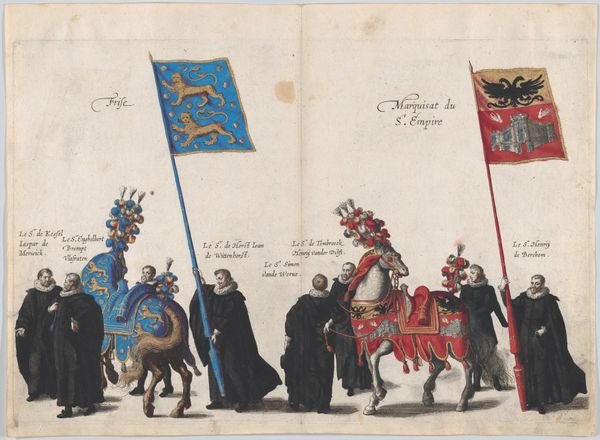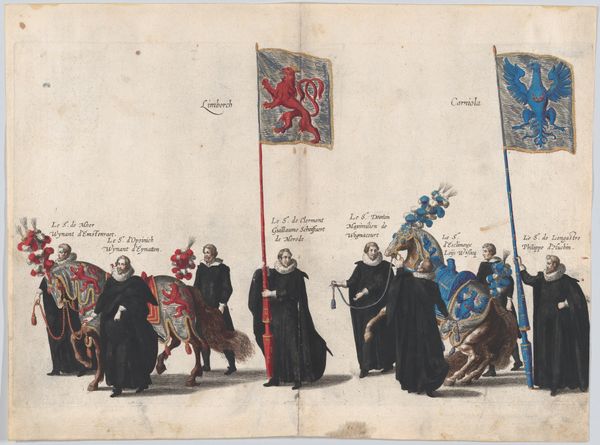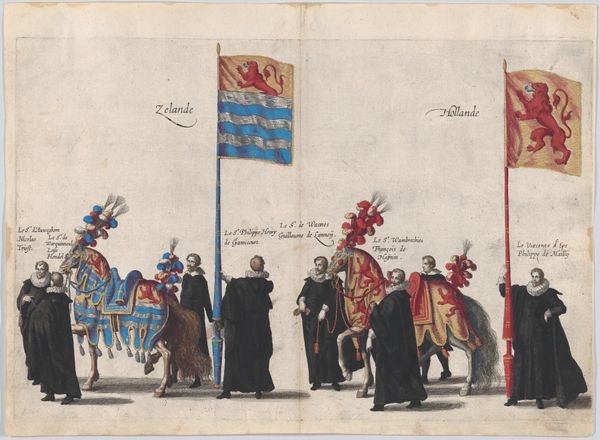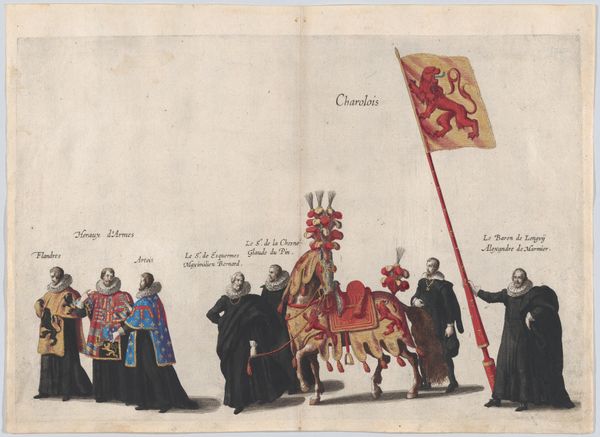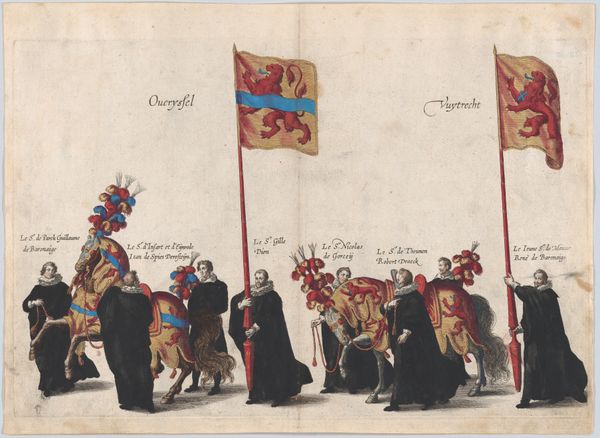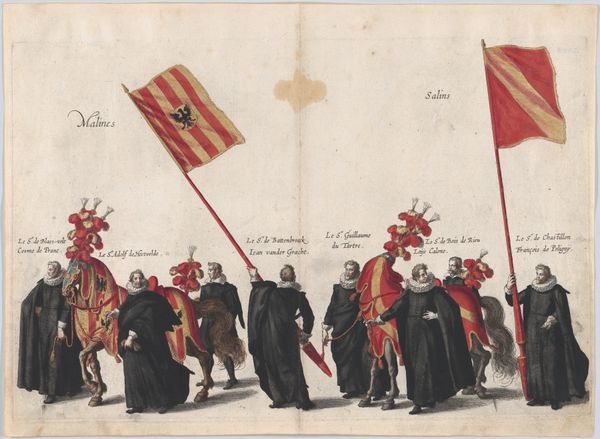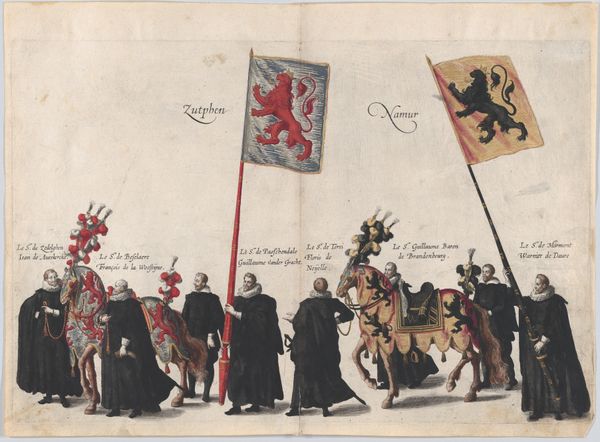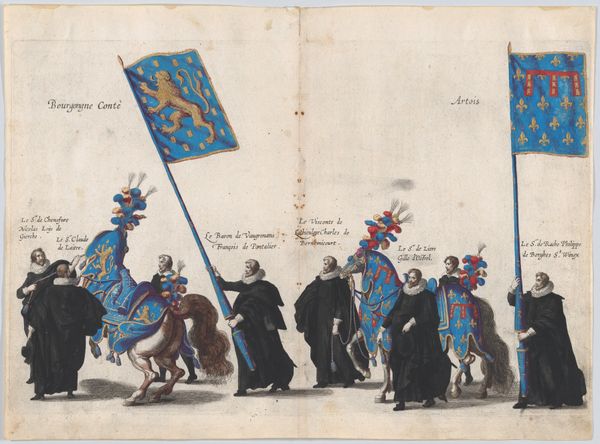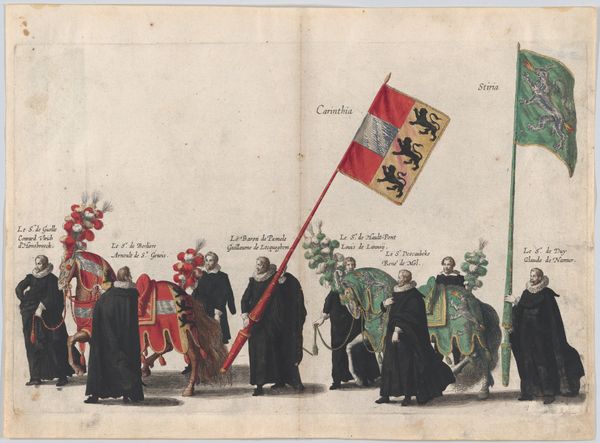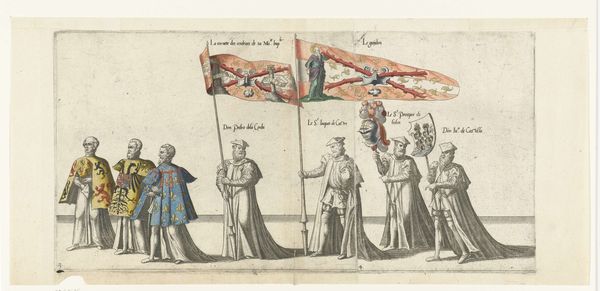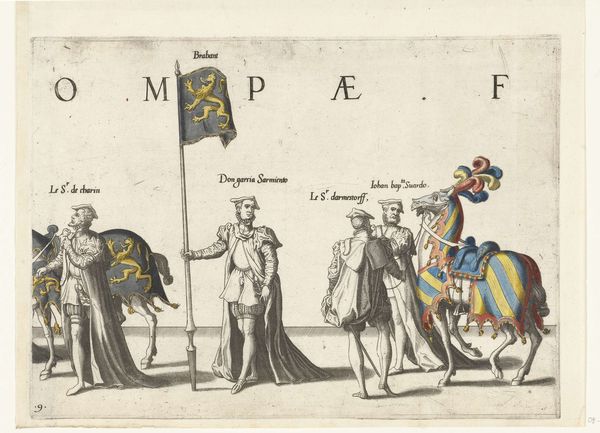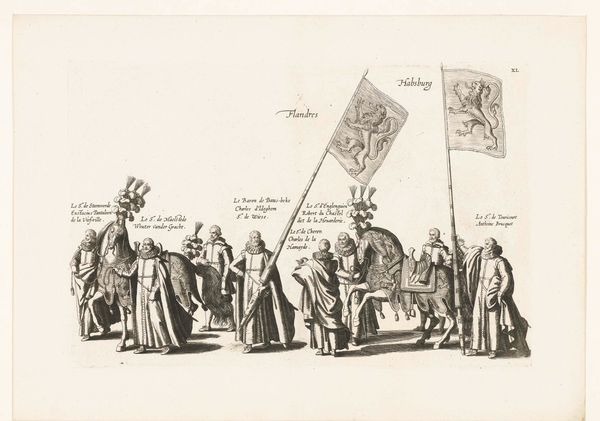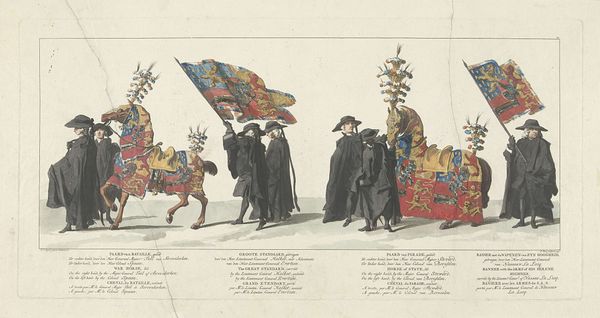
Plate 45: Men with heraldic flags and horses from the House of Brabant and Burgundy marching in the funeral procession of Archduke Albert of Austria; from 'Pompa Funebris ... Alberti Pii' 1623
0:00
0:00
drawing, print, engraving
#
portrait
#
drawing
#
baroque
# print
#
historical fashion
#
horse
#
men
#
history-painting
#
engraving
Dimensions: Sheet: 11 1/4 × 15 3/8 in. (28.5 × 39 cm) Plate: 9 13/16 × 14 3/4 in. (25 × 37.4 cm)
Copyright: Public Domain
Editor: This is "Plate 45: Men with heraldic flags and horses from the House of Brabant and Burgundy marching in the funeral procession of Archduke Albert of Austria; from 'Pompa Funebris ... Alberti Pii'", an engraving by Cornelis Galle I from 1623. The detail is remarkable; you can even see the texture of the fabric in the flags and the elaborate horse trappings. What stands out to you? Curator: Initially, one notices the interplay between line and color, specifically how line dictates form and spatial relations. Observe how Galle uses the engraving technique, that tight, controlled cross-hatching, to describe depth and the weight of the figures, while simultaneously employing color washes rather sparingly, primarily as signifiers of heraldic and representative office, directing the gaze accordingly. What of the semiotic readings do you consider beyond their surface aesthetic? Editor: The figures all in black give it a somber tone. What could the flags mean, and are they meant to provide balance to the composition? Curator: Precisely! The flags not only identify the houses of Brabant and Burgundy, and therefore their territories, in this specific time of the Holy Roman Empire but also introduce a key formal dynamic. They offer verticality that balances the horizontal progression of figures, and their vibrant hues provide a counterpoint to the muted black attire, and their positioning serves the pictorial plane of composition, while acting as text-anchors from a structuralist standpoint. How would you respond if the flag was of different color than the subjects robes? Editor: I guess that would disrupt the harmony! Thanks to your reading, I notice how essential these components are in producing meaning and directing the eye across the whole picture plane. Curator: Indeed. Attending to these formal relationships provides an enriched reading beyond the immediate subject matter, wouldn't you agree?
Comments
No comments
Be the first to comment and join the conversation on the ultimate creative platform.
